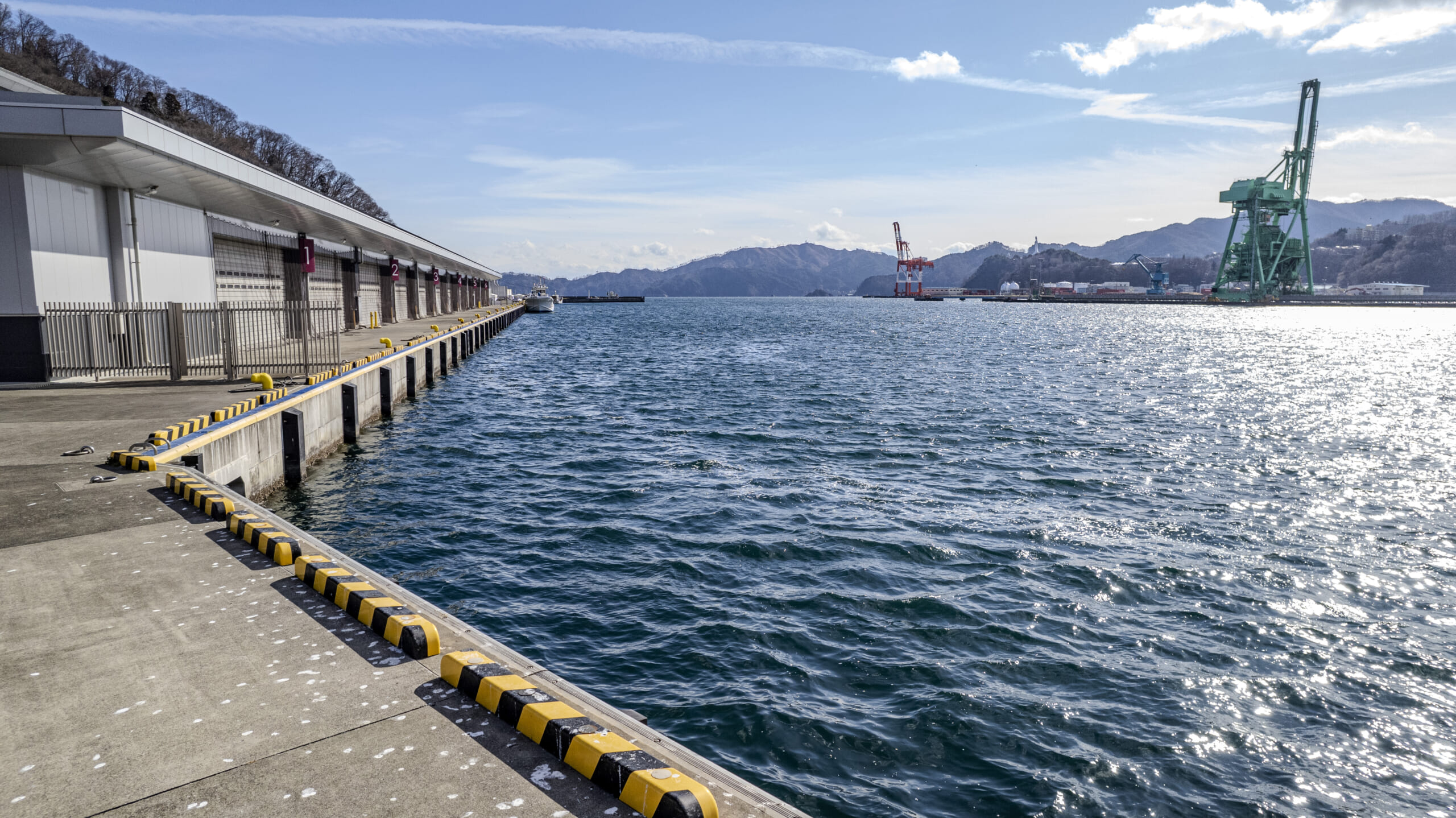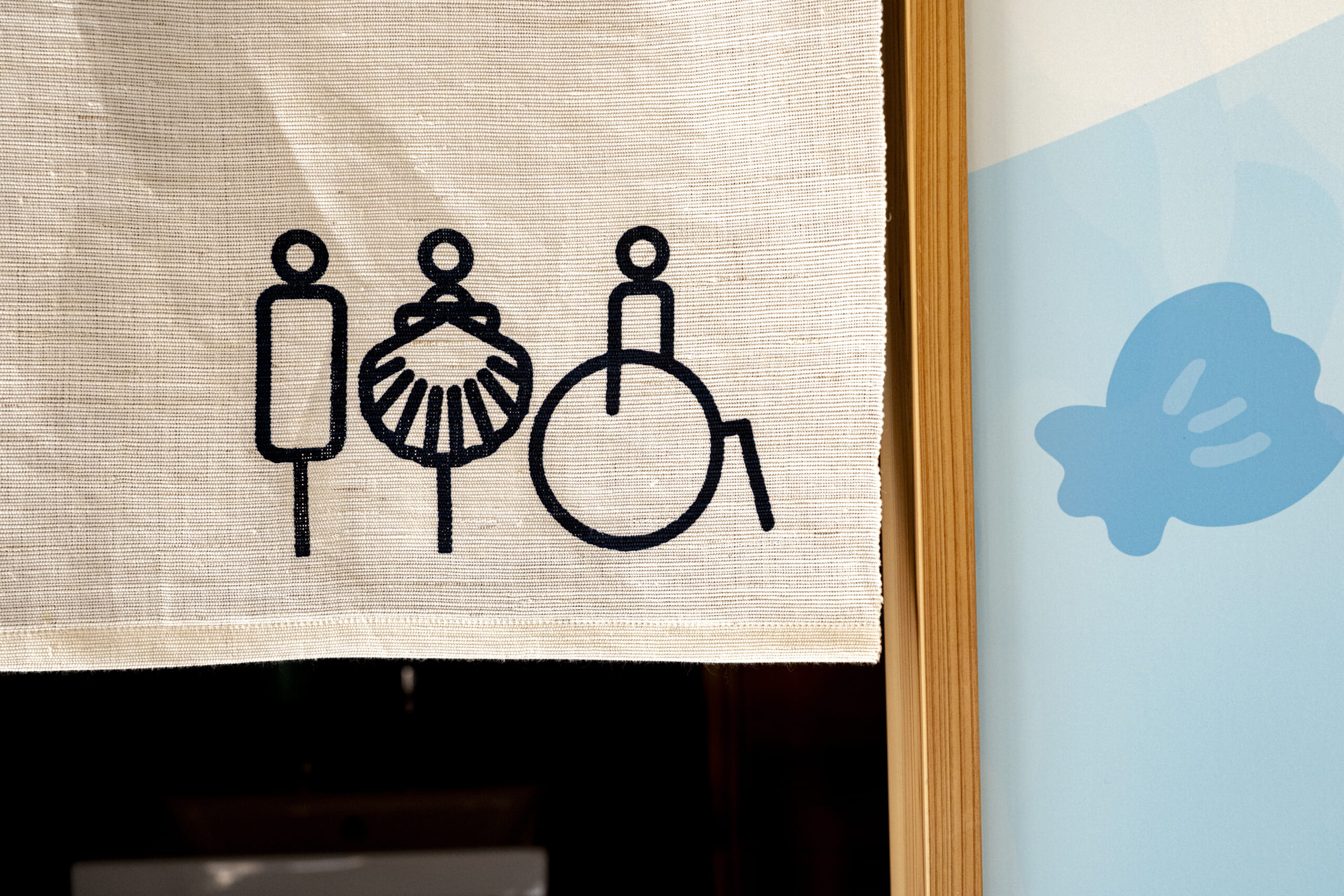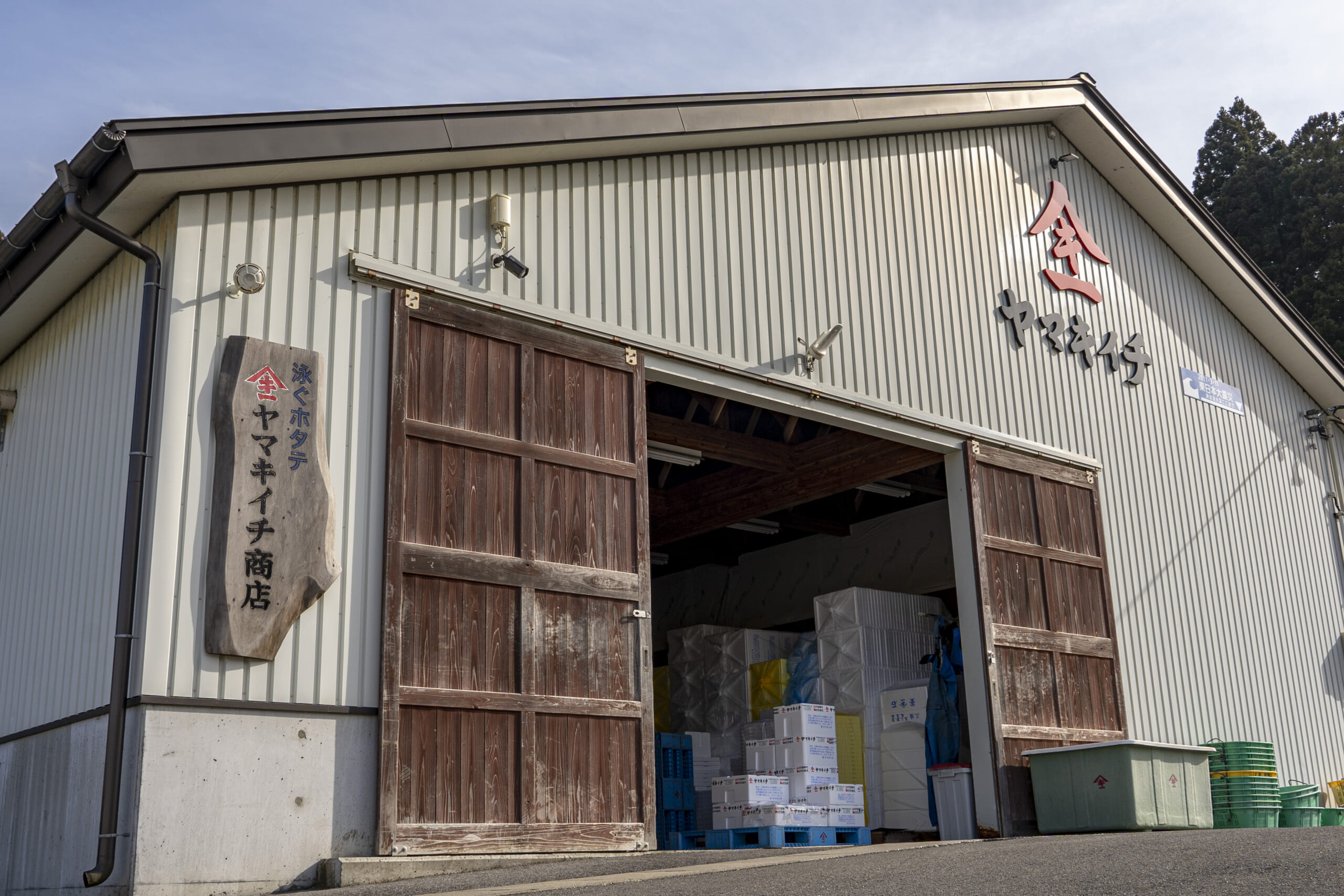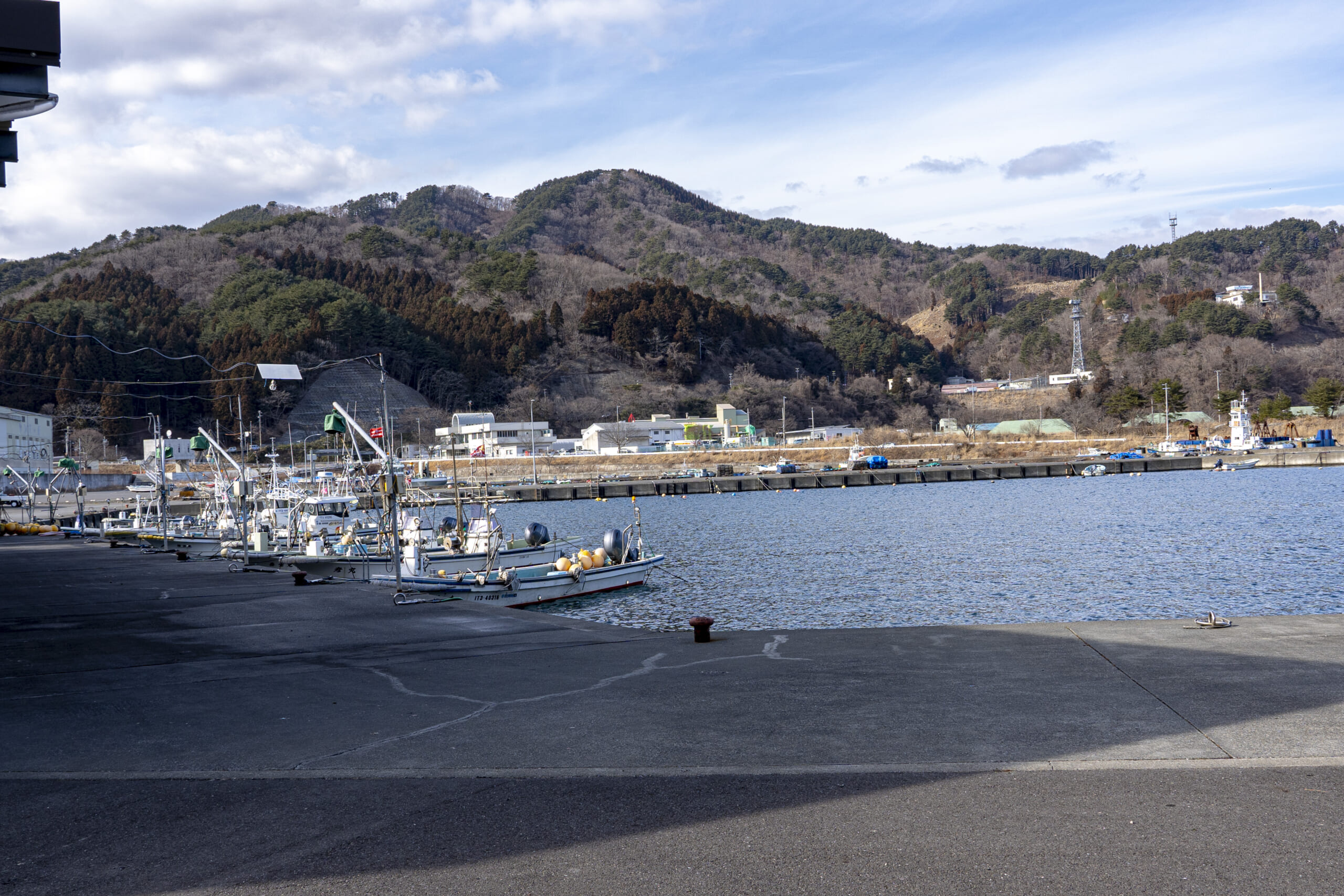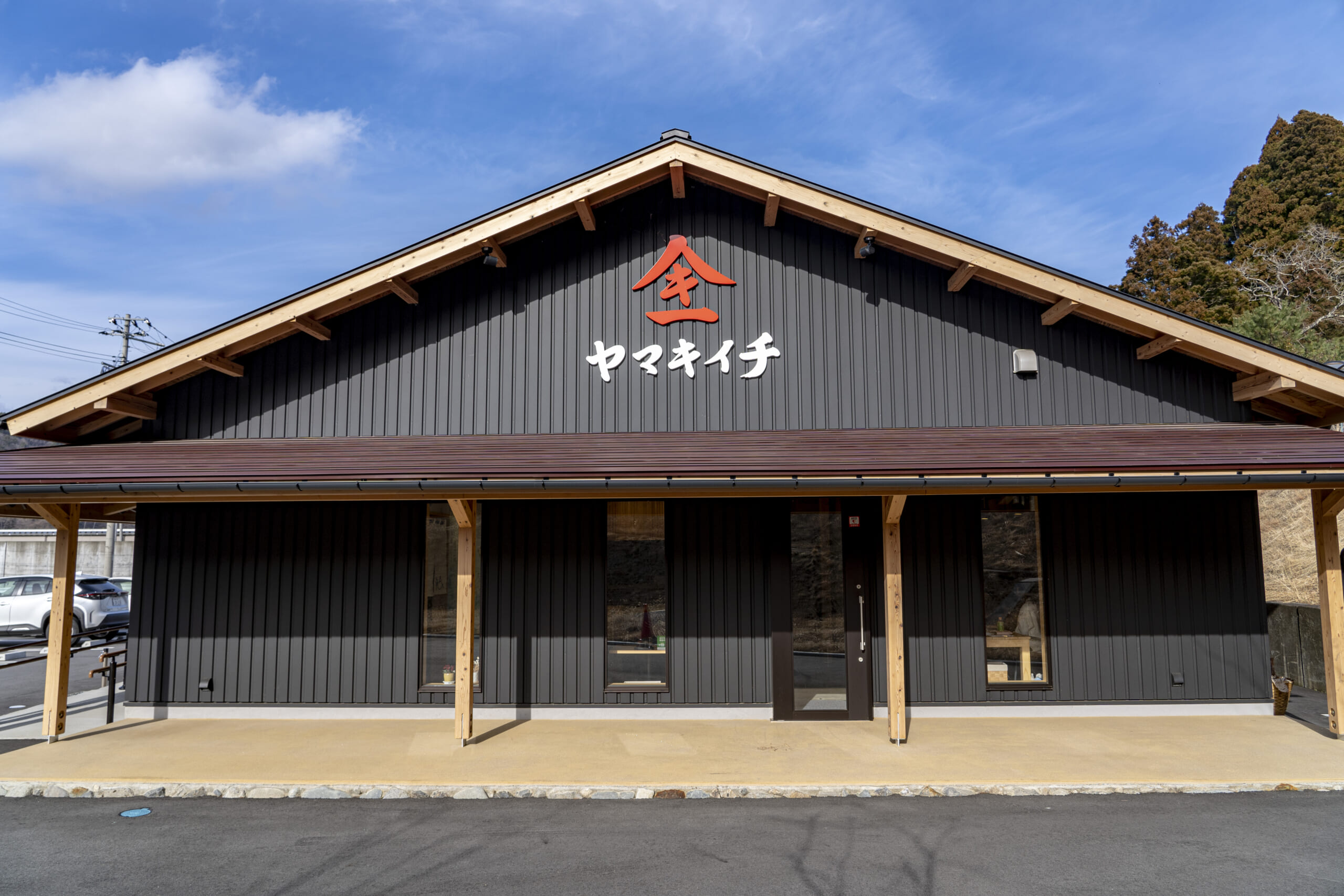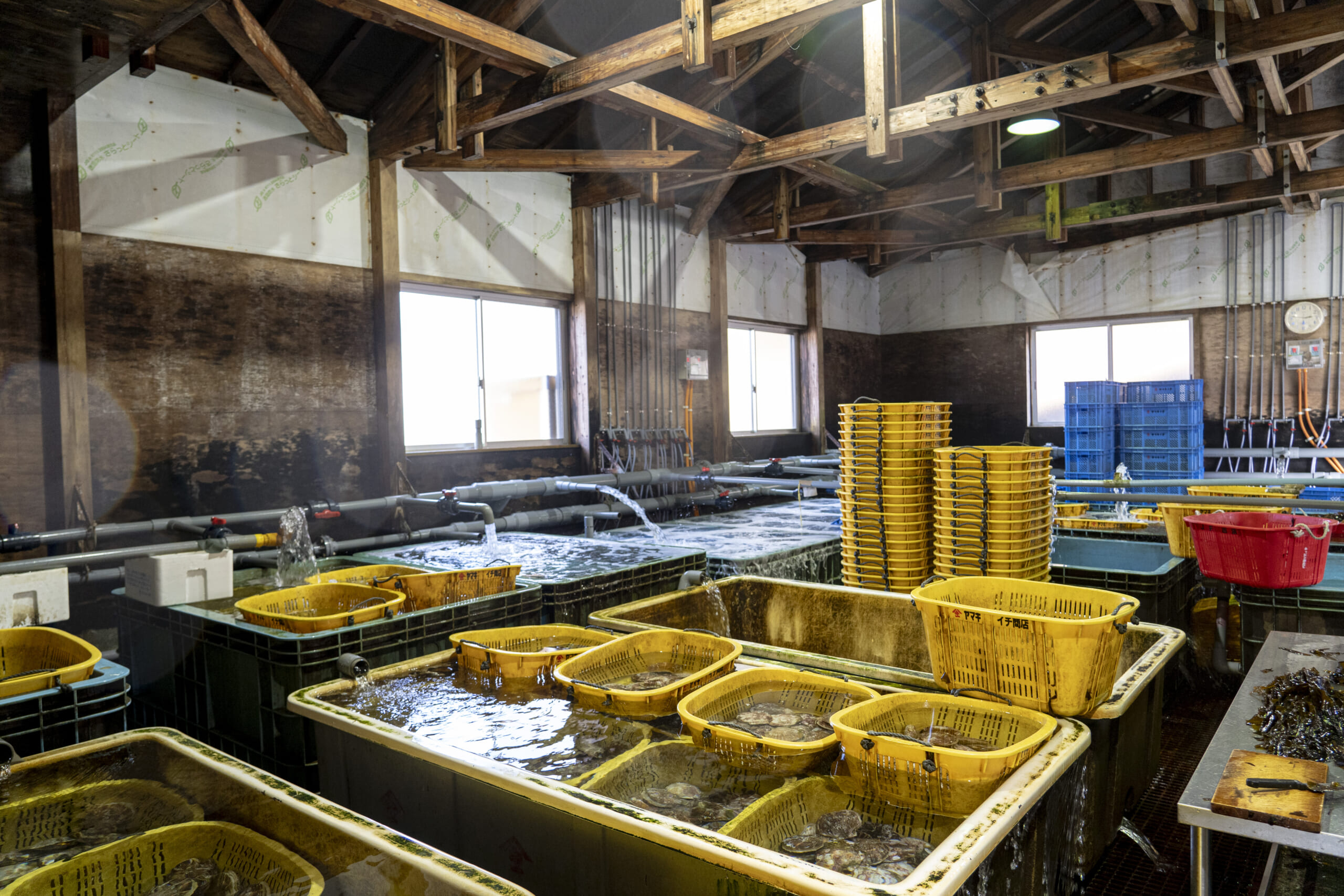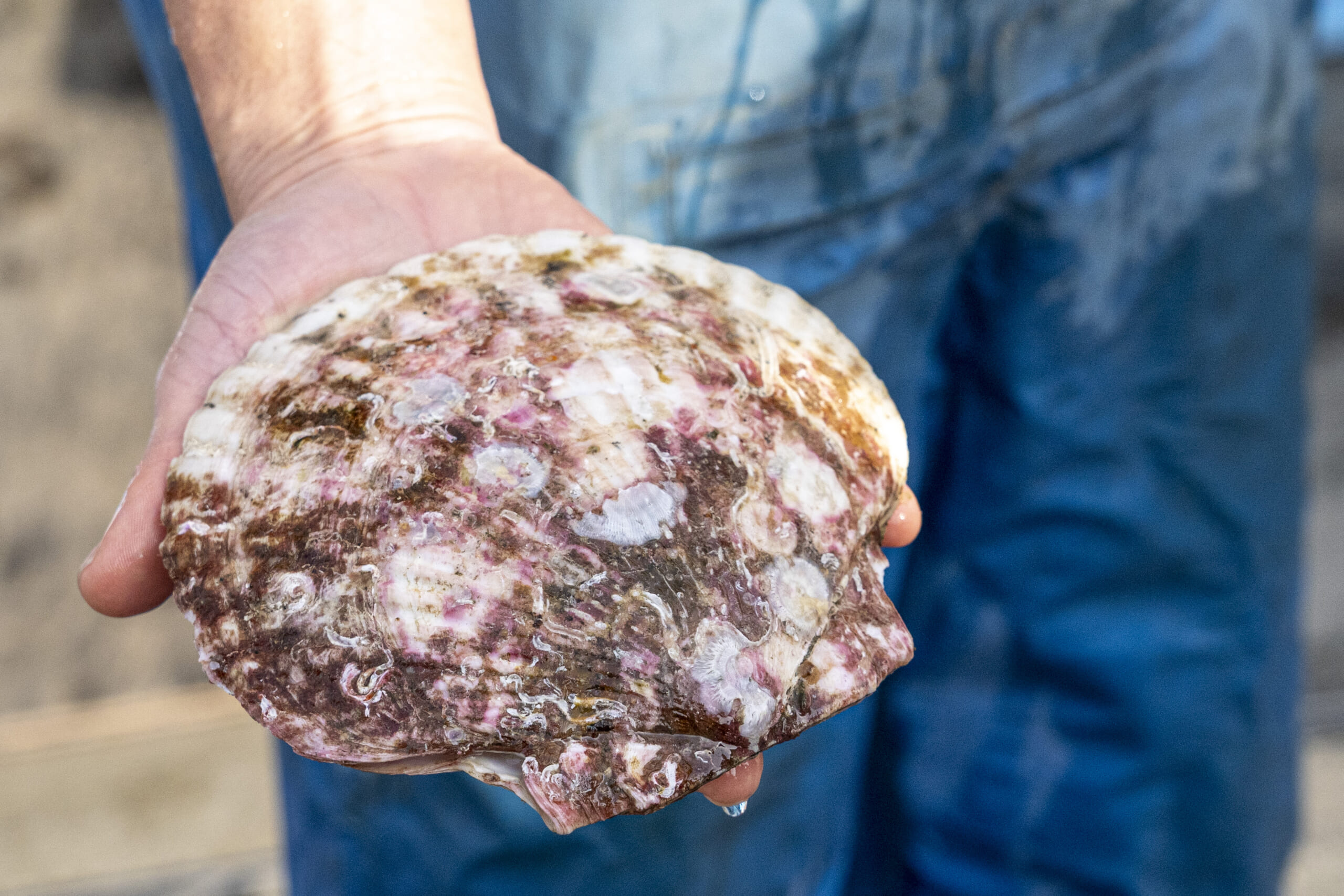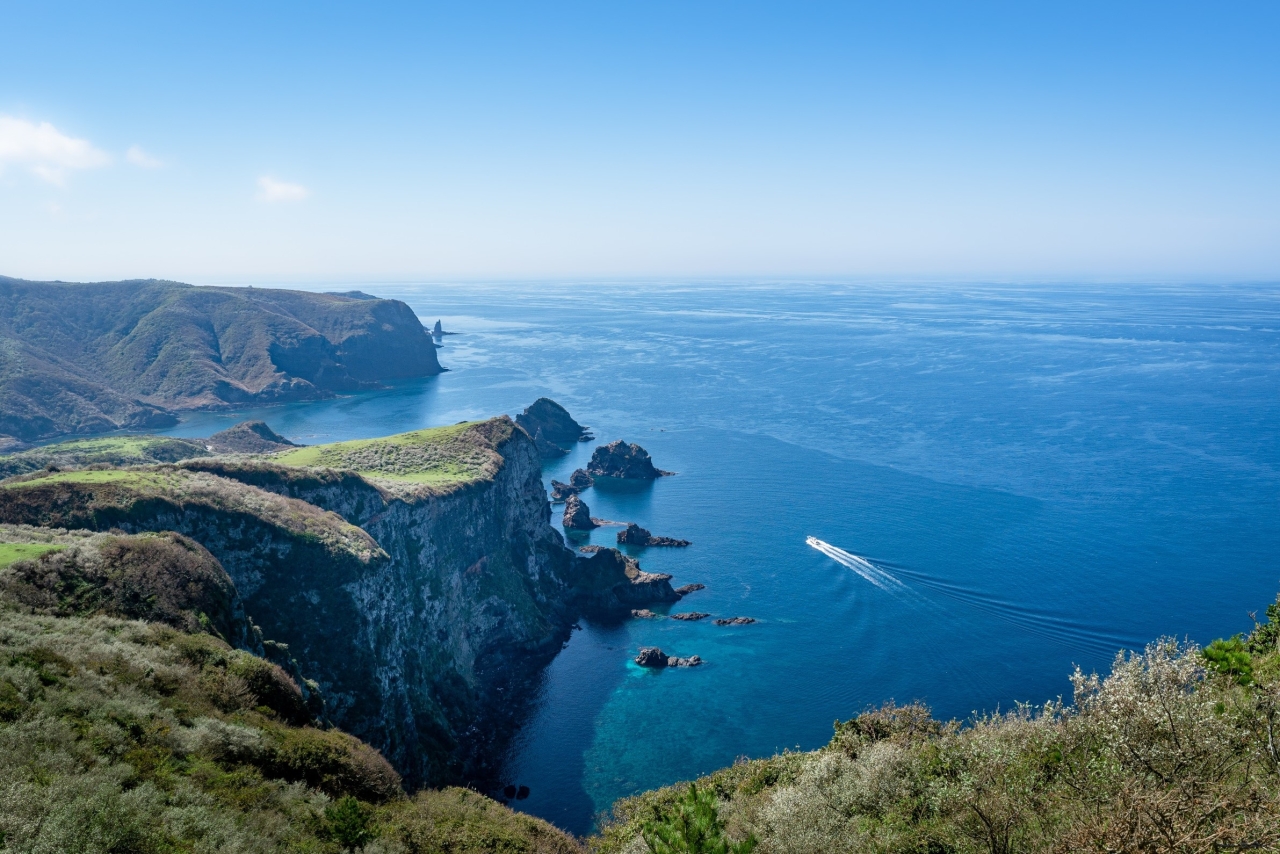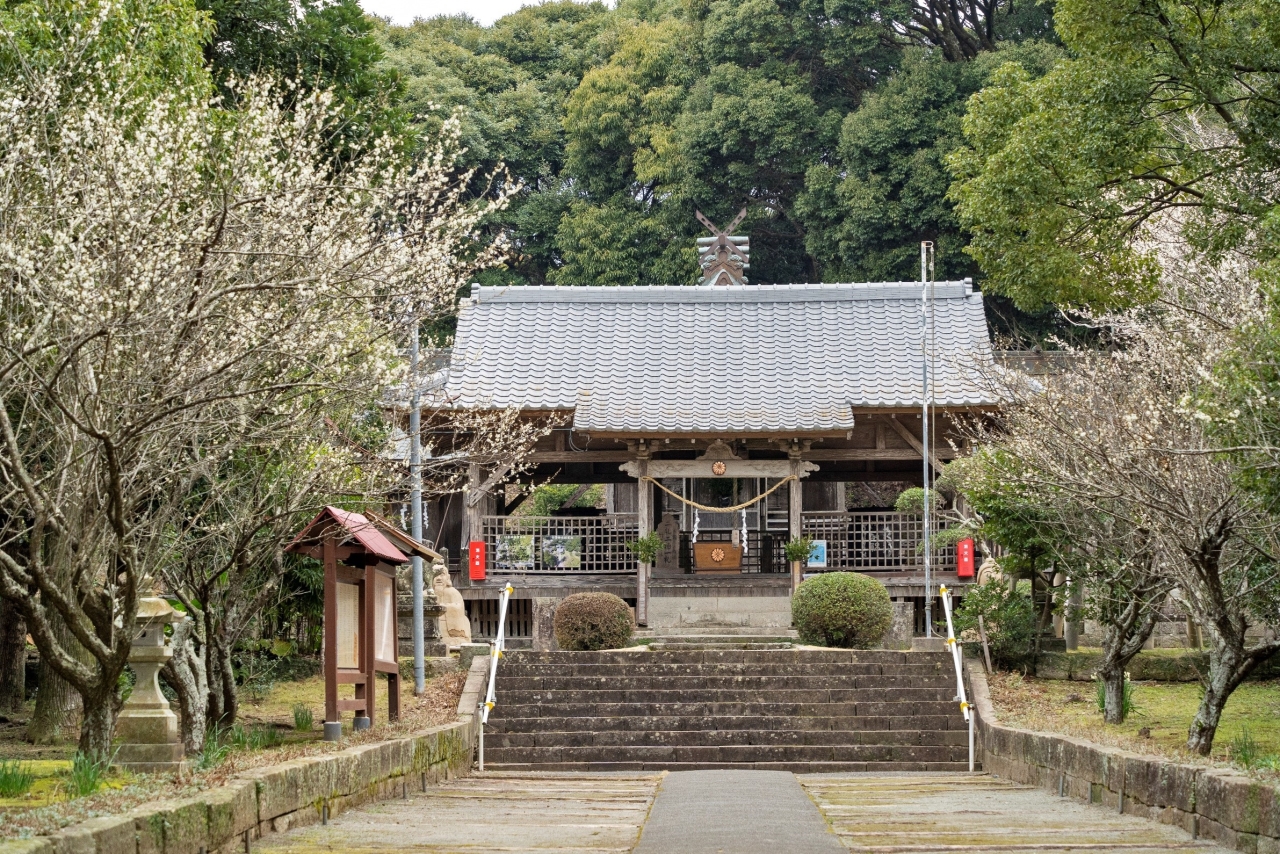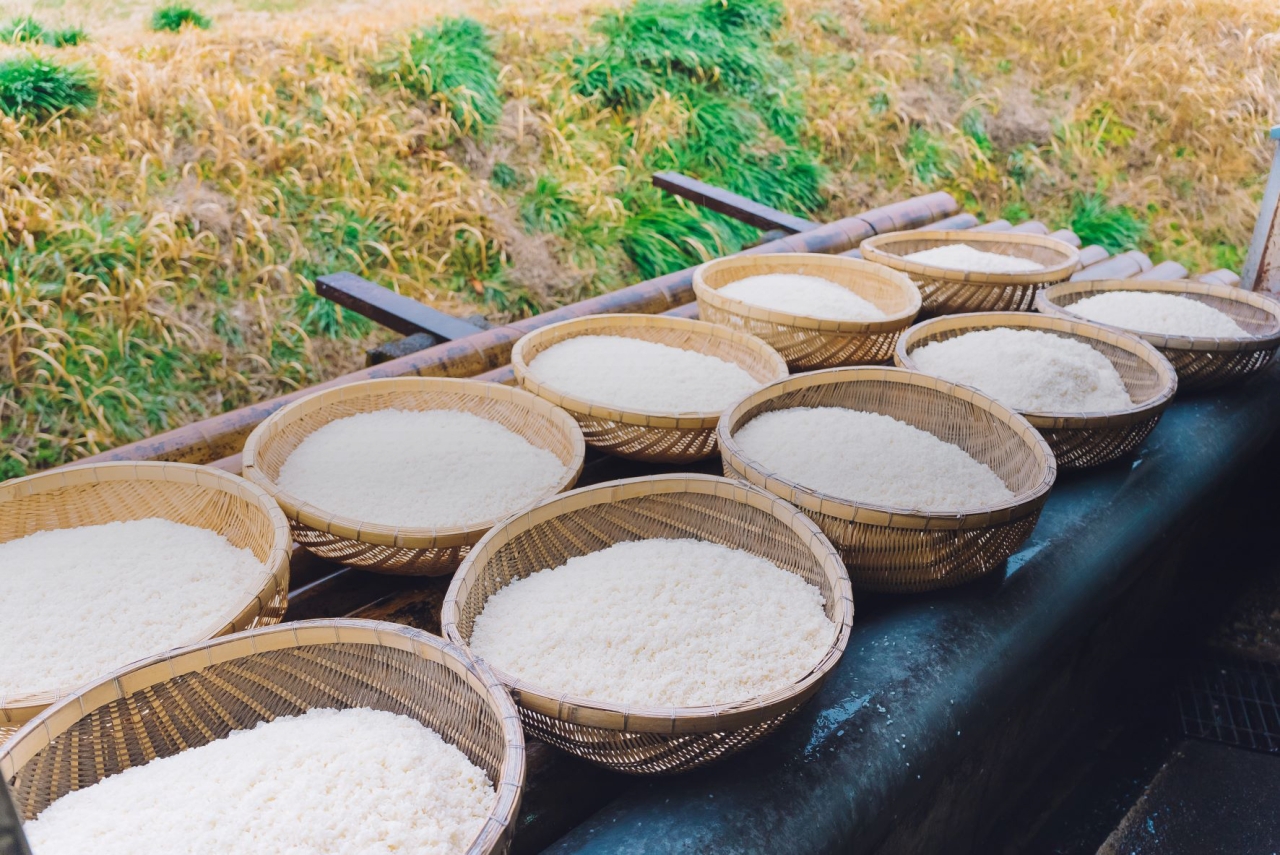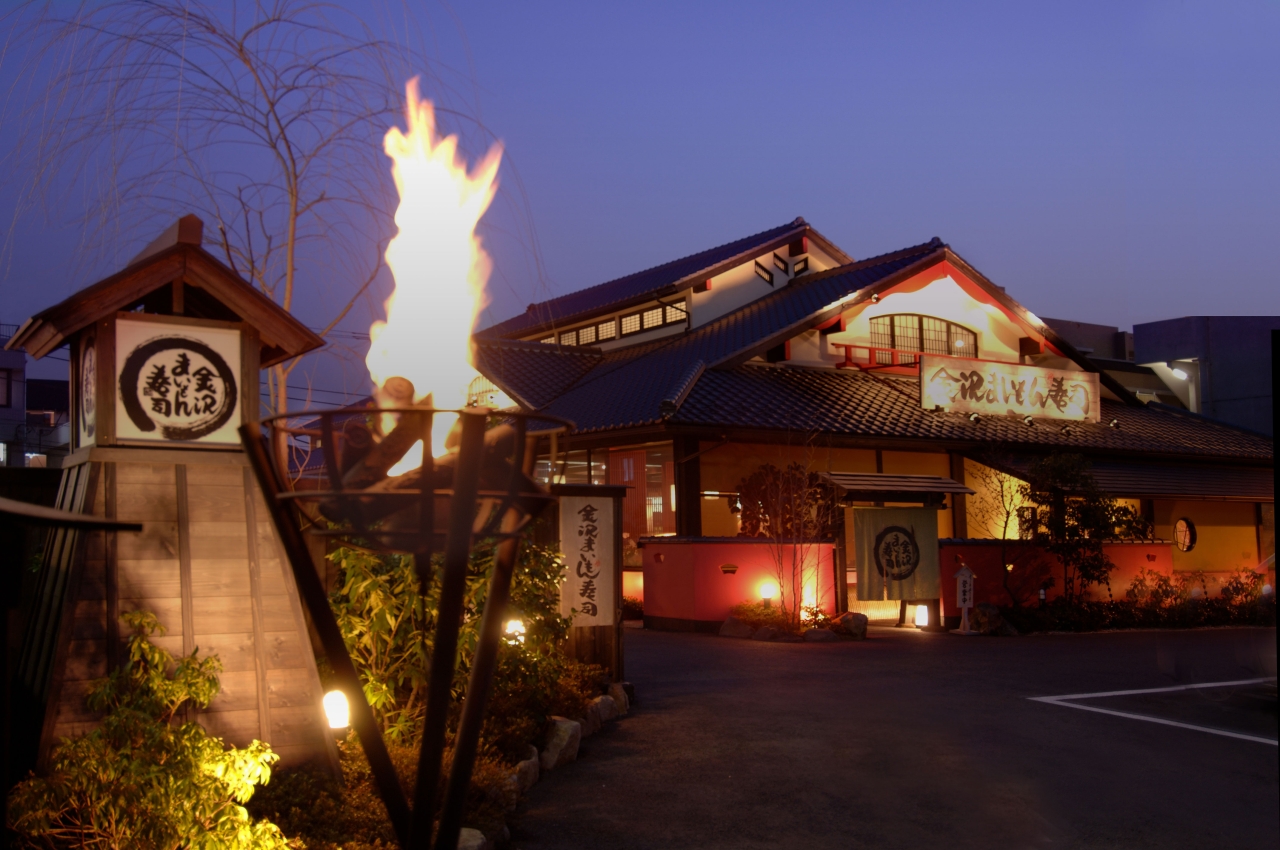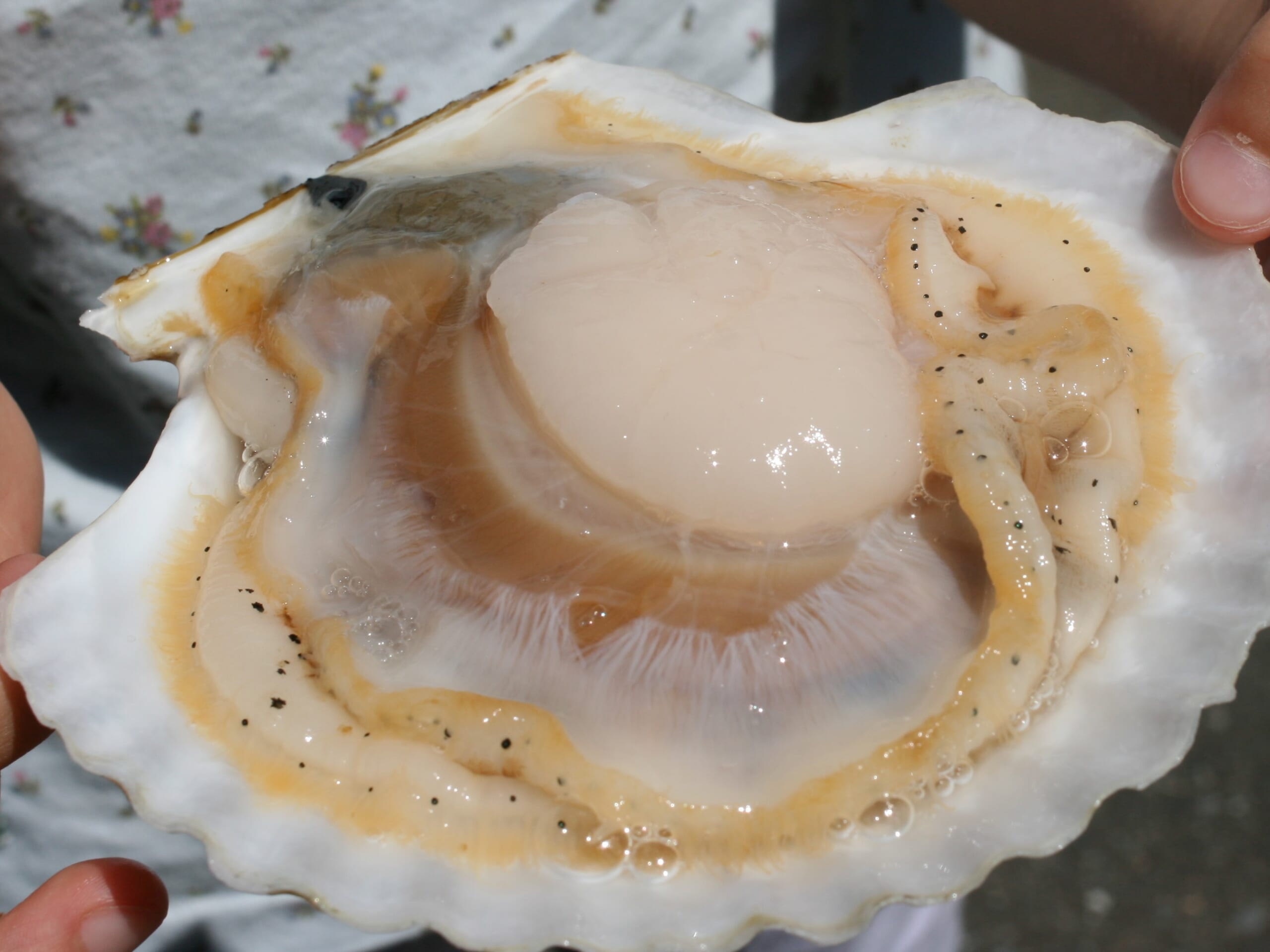
Transforming Conventional Notions Surrounding Scallops A Global Brand Strategy from Iwate Prefecture in Sanriku
_STS02895-scaled.jpg)
Takeichi Kimigahora
Kamaishi City, Iwate Prefecture Yamakiichi Shoten Managing Director
Maximizing the Value of Scallops Delivering Swimming Scallops Worldwide
Located in the center of the Sanriku coastline in the southeastern part of Iwate Prefecture, Kamaishi City is blessed with an abundance of delicious seafood. The city is also known as the birthplace of the modern iron industry. Kamaishi is also famous across Japan for being a rugby city, with the local Nippon Steel Kamaishi rugby club winning the All-Japan Rugby Football Championship for seven consecutive years between 1979 and 1985. Located in this city of diverse charms is Yamakiichi Shoten, a shop established in 1989 that today produces the so-called Swimming Scallops, which are said to be the most valuable scallops on the market. Inheriting the ideas of Yamakiichi Shoten’s founder, current Managing Director Takeichi Kimigahora is aiming to grow these Swimming Scallops into a new Sanriku brand and “communicate the value of scallops from Sanriku worldwide.”
Chapter.01 The Birth of Market-changing Swimming Scallops
Kimigahora’s father, Koki, is the founder and president of Yamakiichi Shoten, and initially began the business selling seaweed. Later, a chance encounter with scallops led to a major turning point for Yamakiichi Shoten.
At the time, Koki Kimigahora was researching the scallop market, and noticed that “all the scallops I see along the coast are swimming with lots of energy but the scallops that are shipped out are weak and not so fresh.” He knew that customers would much prefer to receive Kamaishi scallops that were still fresh, and so he worked on numerous new ways to do so, including looking at different delivery methods. After two years of trial and error, he succeeded in developing a method to deliver scallops that were still alive and swimming throughout Japan. This was the birth of Swimming Scallops. The secret to his success was “thinking about how the scallops feel.” After giving the scallops the same amount of love and care as humans, the scallops themselves led him to success.
Takeichi Kimigahora says, “As founder, my father had the ability to build something up from nothing. He always used to tell me never to do things that everyone else could do.”
These Swimming Scallops fundamentally transformed the scallop’s market value. Now the most valuable scallops on the Japanese market, some customers have said that Swimming Scallops have completely changed their idea of what scallops are, while others have said they have never seen anything like them.
The three main characteristics of these Swimming Scallops are their size, yield, and freshness. Size-wise, they can range from 11 cm to 15 cm. Some are larger than 15 cm and are known as “phantom scallops” for their rarity (one in 10,000). Their high yield is measured by the weight of the scallop compared to the overall weight including the shell, while their freshness is thoroughly managed using a special fish pool and proprietary delivery method. Of course, these phantom scallops can only be offered to customers when they are caught, and Kimigahora says that some customers have waited more than three months to receive them.
These high-quality ingredients have received high acclaim from professional chefs, too. For example, the Swimming Scallops are frequently used by a famous three-Michelin-star French restaurant and a well-known, long-established Chinese restaurant. Kimigahora is also looking at growing the business internationally, and has already succeeded in exporting live Swimming Scallops overseas. (Kimigahora says this was a rare occasion on which his father praised his efforts.) For a few years now, Yamakiichi Shoten has been exporting scallops to restaurants in Bangkok and hotels in Hong Kong. Kimigahora is also examining the potential for BtoC sales overseas.
_④-scaled.jpg)
_STS02981-scaled.jpg)
Chapter.02 Gradually and Carefully Communicating the Product’s Value
Yamakiichi Shoten places huge importance on the promises and reliability of the Swimming Scallops brand. Kimigahora says, “As a successor to the business, it is my role to value the approaches of my father while enhancing the brand value of scallops from Iwate Prefecture in Sanriku. I also believe it is my responsibility to build new systems to further spread awareness of the value of our brand.” This approach can be traced back to Kimigahora’s days working in a department store, where he learned the importance of promoting brand awareness, of sales promotion strategies, of purchasing negotiations, and of personally communicating brand value directly to the customer.
Swimming Scallops rely equally on the producer—that is, the fishermen—and Yamakiichi Shoten as the retailer. The products are only made possible by the uncompromising hard work between the two entities. “We can tell the size of the scallop by how the balance feels in our hands. Healthy scallops also look very different,” says Kimigahora, talking about how the scallops are sorted. Kimigahora has built strong relationships of trust with local fishermen by personally visiting them on the coast, and only purchases scallops that he has seen and checked with his own eyes. He continues, “The battle begins as soon as the scallops are lifted out of the water.”
As one way to promote the qualities of his Swimming Scallops, Kimigahora has built his own website complete with various videos. He also writes blogs and communicates information via social media channels. In this process, however, he has realized how time-consuming the process of communicating value can be. Scallops have taught him that high quality is something you develop slowly but surely, and that there are no shortcuts.
For example, even if sales balloon over the short term thanks to social media, this isn’t always positive.
Yamakiichi Shoten’s rock-solid foundation is built from the approximately 50,000 individual customers it serves.
“We have so many amazing customers and I always think about how lucky we are. My ideal is our customers who found our Swimming Scallops introduce our products to their friends, and in this way slowly but surely we build up our customer base,” says Kimigahora.
_①-scaled.jpg)
_DJI_0457-scaled.jpg)
Chapter.03 Establishing a Sanriku Scallops Brand for the Next Generation
The 2011 Tohoku earthquake and tsunami was a damaging event for Yamakiichi Shoten, but thanks to a positive, forward-looking mindset and global support, it was able to overcome any adversity it faced. In 2022, Yamakiichi Shoten opened Yosuke, finally bringing shape to its long-held idea of providing a place for customers to relax. In the middle of the store is a specially made tank that is filled with Swimming Scallops, while one wall is completely covered with letters from customers, something that Yamakiichi Shoten values dearly. Ever since Yamakiichi Shoten’s opening, Kimigahora’s father has been an entertainer who enjoys nothing more than making customers happy. Yosuke carries forward this approach through the sale of fresh seafood and the provision of seafood dishes, and Kimigahora is putting more plans in place to make Yosuke an enjoyable platform for interaction with customers. Today, the boxes used to transport the scallops are still printed with a playful phrase that Kimigahora’s father thought up more than 20 years ago: Hello! We are a bunch of highly nutritious, soft, and delicious scallops from the Sanriku coast. We wanted to swim over from Kamaishi City in Iwate Prefecture, but we came by car instead. Enjoy!
Naturally and without hesitation, Kimigahora says, “Selling scallops is both my vocation and my mission.” His dream for the future is to grow a global circle of friendship through his scallops. Europe is home to many world-famous companies that are run as family businesses. “If I ever have a chance to meet people from completely different industries like this, I would love to learn about their philosophies and how they go about passing down their thoughts and ideas,” says a hopeful Kimigahora. Just as people from across the world visit Switzerland to eat Swiss cheese, he hopes to build up the Swimming Scallops brand so that people come to Japan and visit Sanriku to try out the scallops. Rather than competing with other companies, Kimigahora is hoping to provide made-to-order scallops for the company’s valuable customers, and work tirelessly to maximize the value of Sanriku scallops.
This altruistic approach is something he has inherited from his father. Always thinking about how to benefit the customer. Taking responsibility for paying an appropriate price for the outstanding scallops raised by local fishermen. If Yamakiichi Shoten and its producers can work together to create a regional cycle in which primary industries take pride in their work to ultimately deliver outstanding products to happy customers, the Swimming Scallops brand and the value it offers will no doubt be carried forward to the next generation.
Kimigahora has a strong desire to use his unique position from Yamakiichi Shoten to do everything that he can to grow the brand. With this approach, it may be that scallops from Iwate Prefecture in Sanriku go on to become Japan’s leading brand of scallops.
_STS03071-scaled.jpg)
_STS03056-scaled.jpg)
Directly in front of JR Kamaishi Station is a steelworks factory from which a plume of white smoke continues to rise. On the day of the interview for this article, the contrast between the blue sky and white smoke created an impressive backdrop. Yamakiichi Shoten is about ten minutes by car along a stunning Sanriku coastal road from the station.
It is clear to see Kimigahora’s vigor and pride as he talks with love about Kamaishi, the Sanriku coast, and the scallops it provides. Without doubt, he is thoroughly and genuinely enjoying his vocation as a scallop seller. We look forward to seeing live Swimming Scallops from Sanriku travel even further across the world.
Written by・Takahiro Miura
Interview Date: Feb.9.2024
The content of this article is as of the interview date.


